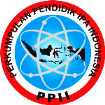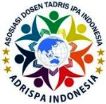Relationship of Chemistry Teachers’ Knowledge, Skills and Affective on Computer-Assisted Learning
Abstract
The study investigated the relationship of chemistry teachers’ knowledge, skills and affective on computer-assisted learning in Sokoto. A questionnaire was designed and distributed to 81 chemistry teachers in 24 secondary schools in the metropolis. The premises that guide the development of the test items used are strongly based on constructivism theory of learning and related literature. The data obtained from an online survey (Google form) were imported into an excel spreadsheet which was later keyed into SPSS 25 for further analysis. The results indicated that Chemistry teachers of Sokoto are have moderate level of both knowledge, skills and affective of computer-assisted learning. The results reveals that both knowledge, skills and affective serves independent purpose for instruction that utilizes computer-assisted learning. It concluded that the moderate knowledge, skills or affect are not significant for integrating computer-assisted learning in chemistry instruction. Awareness alone cannot guarantee quality integration of instruction in the classroom. Thus, chemistry teachers should seek more professional training on computer-assisted learning through workshop, seminars and conferences.
Keywords: knowledge, skills, affective, computer-assisted learniFull Text:
PDFReferences
Aksela, M. (2005). Supporting Meaningful Chemistry Learning and Higher-order Thinking through Computer-Assisted Inquiry : A Design Research Approach [University of Helsinki, Finland]. https://helda.helsinki.fi/bitstream/handle/10138/21127/supporti.pdf?sequence=1
Aliyu, H. (2018). Sokoto Chemistry teachers’ Knowledge, Skills and Affective of Inquiry-Based and Computer-Assisted Learning Strategies. University Teknologi Malaysia.
Altun, E., Demirdaǧ, B., Feyzioǧlu, B., Ateş, A., & Çobanoǧlu, I. (2009). Developing an interactive virtual chemistry laboratory enriched with constructivist learning activities for secondary schools. Procedia - Social and Behavioral Sciences, 1(1), 1895–1898. https://doi.org/10.1016/j.sbspro.2009.01.333
Bakarman, A. A. (2011). Attitude, Skill, and Knowledge: (ASK) A New Model for Design Education. Proceedings of the Canadian Design Engineering Network (CDEN) Conference, Kaninaskis, Alberta, July 18-20, 2005. http://library.queensu.ca/ojs/index.php/PCEEA/article/view/3894
Bayrak, B. K., & Bayram, H. (2010). The Effect of Computer Aided Teaching Method on The Student’s Academic Achievement In The Science and Technology Course. Procedia - Social and Behavioral Sciences, 9, 235–238. https://doi.org/10.1016/j.sbspro.2010.12.142
Blessinger, P., & Carfora, J. M. (2015). Inquiry-Based Learning for Science, Technology, Engineering, and Math (STEM) Programs: A Conceptual and Practical Resource for Educators. Emerald Group Publishing, 2015. Bloom, B. S. (1956). Taxonomy of educational objectives. Vol. 1: Cognitive domain. McKay, 20, 24.
Brewer, C., & Smith, D. (2011). Vision and Change in Undergraduate Biology Education: A Call to Action. Taylor & Francis. http://visionandchange.org/finalreport.
Bugaje, B. M. (2013). Qualitative Chemistry Education: The Role of the Teacher. Journal of Applied Chemistry (IOSR-JAC), 4(5), 10–14. https://doi.org/10.1080/00094056.1949.10726229
Chauhan, S. (2017). A Meta-Analysis of The Impact of Technology on Learning Effectiveness of Elementary Students. Computers and Education, 105, 14–30. https://doi.org/10.1016/j.compedu.2016.11.005
Chiu, M., & Wu, H. (2009). The Roles of Multimedia in the Teaching and Learning of the Triplet Relationship in Chemistry. In Multiple Representations in Chemical Education (pp. 251–283). Springer. https://doi.org/10.1007/978-1-4020-8872-8
Cresswell, J. W. (2012). Educational Research: Planning, Conducting and Evaluating Quantitative and Qualitative Research (Fourth). Pearson Education, Inc.
Davis, E. A., & Krajcik, J. S. (2005). Designing Educative Curriculum Materials to Promote Teacher Learning. Educational Researcher, Vol 34, Is(April), 3–14. http://journals.sagepub.com/doi/abs/10.3102/0013189x034003003
Drechsler, M., & Van Driel, J. (2008). Experienced Teachers’ Pedagogical Content Knowledge of Teaching Acid-base Chemistry. Research in Science Education, 38(5), 611–631. https://doi.org/10.1007/s11165-007-9066-5
Ferk-Savec, V., Urankar, B., Aksela, M., & Devetak, I. (2017). Prospective Chemistry Teachers’ Perceptions of Their Profession: The State of The Art in Slovenia and Finland. Journal of the Serbian Chemical Society, 00, 83–83. https://doi.org/10.2298/JSC161221083S
Gilbert, J. K. (2009). Multiple representations in chemical education (Vol. 4, pp. 1-8). D. F. Treagust (Ed.). Dordrecht: Springer.
Greenhow, C. (2011). Online Social Networks and Learning. On the Horizon. https://doi.org/10.1108/10748121111107663
Hanna, W. (2007). The New Bloom’s Taxonomy: Implications for Music Education. Arts Education Policy Review, 108(4), 7–16. https://doi.org/10.3200/AEPR.108.4.7-16
Hartley, R. (2010). The Evolution and Redefining of “CAL”: A Reflection on the Interplay of Theory and Practice. Journal of Computer Assisted Learning, 26(1), 4–17. https://doi.org/10.1111/j.1365-2729.2009.00340.x
Igwe, I. O. (2015). Secondary Education Chemistry Curriculum Implementation in Nigeria: Contending Issues and Innovative Approaches for the Future. IJSAR Journal of Life and Applied Sciences (IJSAR-JLAS), 3(1), 24–33.
Kimmons, R., Clark, B., & Lim, M. (2017). Understanding Web Activity Patterns Among Teachers, Students and Teacher Candidates. Journal of Computer Assisted Learning, 33(6), 588-596. https://doi.org/10.1111/jcal.12202
Krathwohl, D. R. (2002). A Revision of Bloom ’ s Taxonomy : An Overview. Theory Into Practice, 41(4), 212–218. https://doi.org/10.1207/s15430421tip4104
Lashari, T. A., Alias, M., Akasah, Z. A., & Kesot, J. (2012). An AffectiveCognitive Teaching and Learning Framework in Engineering Education. ASEAN Journal of Engineering Education, 1(11), 11–24.
Liao, Y. kuang C. (2007). Effects of Computer-Assisted Instruction on Students’ Achievement in Taiwan: A Meta-analysis. Computers and Education, 48(2), 216–233. https://doi.org/10.1016/j.compedu.2004.12.005
Mayer, R. E. (2012). Cognitive Theory of Multimedia Learning. In The Cambridge Handbook of Multimedia Learning (pp. 2011–2013). Cambridge University Press.
Moore, K. D. (2012). Effective Instructional Strategies: From Theory to Practice (3rd ed.). SAGE Publications, USA.
Munzenmaier, C., & Rubin, N. (2013). Bloom’s Taxonomy: What’s Old Is New Again. Perspectives, 1–47. http://www.elearningguild.com/research/archives/index.cfm?id=164&action=viewonly&utm_campaign=research-blm13&utm_medium=email&utm_source=elg-insider
Nasiru, M. S., & Bashiru, M. L. (2012). The Role of Information and Communication Technology (ITC) in Teaching Adult Education Students in Sokoto State: Counselling Intervention. Journal of Assertiveness, 1–11.
NationalResearchCouncil. (2012). Challenges in Chemistry Graduate Education: A Workshop Summary. National Academic Press.
Özmen, H. (2008). The Influence of Computer-Assisted Instruction on Students’ Conceptual Understanding of Chemical Bonding and Attitude Toward Chemistry: A Case for Turkey. Computers and Education, 51(1), 423–438. https://doi.org/10.1016/j.compedu.2007.06.002
Smith, L., & Evans, J. (2010). SPEAK UP: Students Embrace Digital Resources for Learning. Knowledge Quest, 39(2), 20-27.
Räsänen, P., Salminen, J., Wilson, A. J., Aunio, P., & Dehaene, S. (2014). Cognitive Development Computer-assisted intervention for children with low numeracy skills. 24(2009), 450–472. https://doi.org/10.1016/j.cogdev.2009.09.003
Saadé, R. G., Bűyűkkurt, M. D., & Alkhori, C. (2011). Technology Mediated Learning : Observations in Two Technologies. Issues in Informing Science and Information Technology, 8, 395–408.
Santos, J. R. A. (2013). Cronbach ’ s Alpha : A Tool for Assessing the Reliability of Scales. Journal of Extension, 37(2), 6–9. http://www.joe.org/joe/1999april/tt3.php
Schulman, K. M. (2011). A Qualitative Case Study of Instructional Support for Web-Based Simulated Laboratory Exercises In Online College Chemistry Laboratory Courses (Doctoral dissertation, Capella University).
Seo, Y.-J., & Bryant, D. P. (2009). Analysis of Studies of The Effects of Computer-Assisted Instruction on The Mathematics Performance of Students With Learning Disabilities. Computers & Education, 53(3), 913–928. https://doi.org/10.1016/j.compedu.2009.05.002
Taber, K. S. (2008). Towards a Curricular Model of the Nature of Science. In Science & Education (pp. 179–218). Springer. https://doi.org/10.1007/s11191-006-9056-4
Talib, C. A., Ali, M., Zawadzki, R., Baharuddin, N. S., Thoe, N. K., & Aliyu, H. (2017). Video-Based Learning in Chemistry Education: Exemplars, Issues and Challenges. SEAMEO RECSAM, (12), 35-51. http://www.recsam.edu.my/lsm/2017/(4)CAT p35-51_final.pdf
DOI: http://dx.doi.org/10.24014/jnsi.v5i2.17853
Refbacks

Journal of Natural Science and Integration
E-ISSN: 2620-5092 P-ISSN: 2620-4967
Published By:
Department of Science Education, Faculty of Education and Teacher Training,
State Islamic University of Sultan Syarif Kasim Riau, Indonesia
Mailing Address:
Jl. H.R Soebrantas Km. 15 No. 155
Kelurahan Simpang Baru
Kecamatan Tuah Madani, Pekanbaru, Riau, Indonesia
Email: jnsi.tadrisipa@uin-suska.ac.id
Indexed By:
Journal of Natural Science and Integration is licensed under a Creative Commons Attribution 4.0 International License.


_-_Copyy2.png)






.jpg)
.png)
.jpg)
.jpg)




